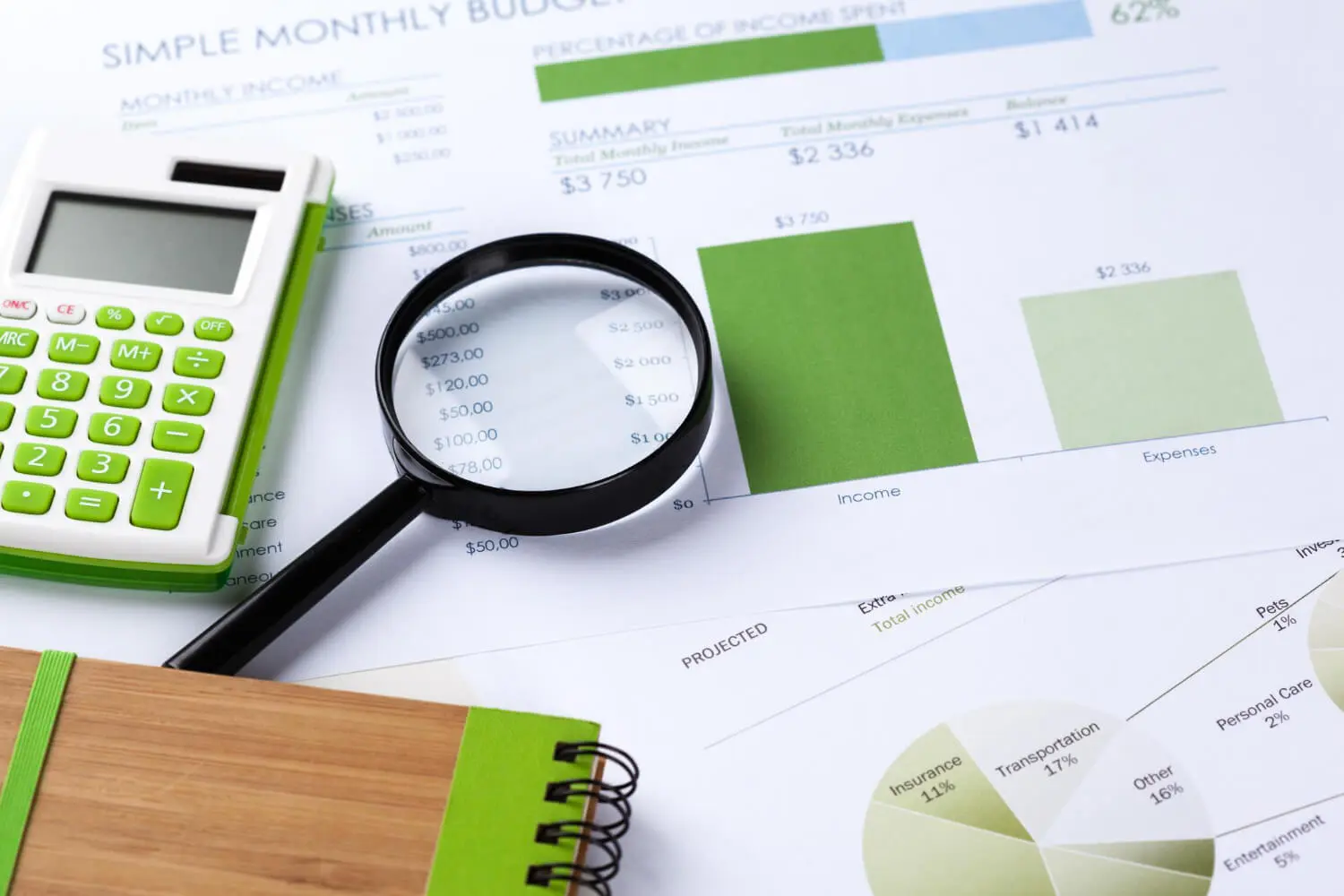Your Partner
in Legal Success
| Reading Time: 6 Minutes
What is a Tax Inspection Report?

The tax inspection report is a document prepared due to a process that audits the accuracy of the information provided by businesses and individual taxpayers in their tax returns. These reports, issued by the tax authorities, check whether taxpayers have provided incorrect information or fulfilled their tax obligations completely.
The tax inspection report is of utmost importance for businesses and individual taxpayers, as incorrect statements or tax deficiencies can lead to serious penalties. Moreover, tax inspection reports can also be a valuable source of information for investors, as they provide insights into the financial health and performance of businesses. Therefore, it is crucial to fill out tax returns accurately and completely and to respond to tax authorities’ requests in a timely and correct manner.
The word “report” means “a written or spoken account of something that has been investigated or observed“. In Tax Law, a tax inspection report is a document prepared by authorized individuals who investigate whether taxpayers have fulfilled their obligations to pay taxes correctly and on time. These reports cannot be the subject of an annulment lawsuit as they do not constitute a single administrative act. Tax inspection reports are regulated under Article 135 and subsequent articles of the 213th Tax Procedure Law (TPL).
Under the “Purpose” heading of the “Tax Inspection” section of the 213th Tax Procedure Law, Article 138 stipulates that the purpose of a tax inspection is to investigate, determine, and ensure the accuracy of the taxes that should be paid. When preparing this report, if deemed necessary, the actual inventory of the taxpayer’s economic assets or examination of the elements that should be indicated in the tax returns can also be included in the inspection scope.
Who Can Conduct a Tax Inspection?
Under Article 135 of the Tax Procedure Law, tax inspectors, assistant tax inspectors, the chief revenue officer of the province, or the director of the tax office are authorized to conduct tax inspections. Officials holding director positions within the central and provincial organizations of the Revenue Administration are also empowered to conduct tax inspections.
Who is Subject to Tax Inspections?
Individuals and legal entities required by the Tax Procedure Law or other laws to keep books, maintain documents and records, and submit them for inspection are subject to tax inspections. Taxpayers required to keep books under Article 172 of the Tax Procedure Law include traders, artisans, commercial companies, public economic institutions, economic enterprises belonging to associations and foundations, self-employed professionals, and farmers. These taxpayers may also be subject to tax inspections.
When Can Tax Audits be Conducted?
According to Article 138 of the Tax Procedure Law, tax audits can be conducted until the end of the statute of limitations period, including the fiscal year for which the accounts have not been closed. Prior audits or re-estimating the taxable base does not preclude further audits and supplementary taxation if necessary.
The statute of limitations periods for tax claims are regulated under Article 114 of the Tax Procedure Law. Accordingly, taxes that have yet to be assessed and notified to the taxpayer within five years from the beginning of the calendar year following the year the tax liability arises are time-barred. For example, if a tax liability arose in April 2017, the 5-year period would start from the beginning of 2018, and the claim would be time-barred as of the beginning of 2023.
In light of these explanations, it can be understood that tax audits must be conducted within the five-year statute of limitations period stipulated under Article 113 of the Tax Procedure Law. Furthermore, there is no obligation to notify the taxpayer before conducting a tax audit.
How Are Taxpayers Selected For Tax Audits?
Taxpayers to be audited are selected based on the reports issued by the risk analysis center, the identification of the taxpayer as high-risk, complaints and reports, inspections and investigations, reports received from other institutions and organizations, and opinions and recommendations reports written by tax inspectors.
How Long Does a Tax Audit Take?
A tax audit should be completed within one year from the audit’s beginning. If a full audit is not possible, a limited audit should be completed within six months, and VAT refund audits should be completed within three months. However, suppose the audit cannot be completed within these timeframes. In that case, additional time may be granted, not exceeding six months for full and limited audits and two months for VAT refund audits.
According to Article 21 of the Regulation on the Procedures and Principles to be Followed in Tax Audits, the audit report’s completion date is the date it is delivered to the relevant audit and inspection unit to be forwarded to the review commission.
How Does The Tax Inspection Process Progress?
When a decision is made to obtain a tax inspection report about a taxpayer for any reason stated above, the tax inspector who will carry out the inspection task is informed by letter. The inspection task letters include information about the individuals and topics to be examined, the type, reasons, period, and duration of the inspection.
Under Article 138 of the Tax Procedure Law, it is not mandatory to notify the taxpayer before the tax inspection. However, firstly, under Article 140 of the TPL, the taxpayer is notified in writing that the tax inspection has started and the subject of the inspection. The tax inspection is conducted only for the period and subject specified in the inspection task letter.
If the inspector detects an irregularity outside the specified period, they inform the relevant authorities with reasons. Likewise, if any irregularity is detected about another taxpayer during the inspection process, it is reported to the relevant unit with its reasons.
Those authorized to carry out tax inspections begin the inspection within fifteen days at the latest from the date of the inspection task given. According to Article 139/1 of the TPL, tax inspections are primarily carried out at the tax office. The books and/or documents requested for the inspection are requested from the taxpayer to be brought to the tax office. If the taxpayer fails to bring these books or documents to the tax office without any excuse within the specified period, it is deemed that they have brought them, and the tax inspection continues accordingly.
The inspection in the office does not prevent the inspection subject from being detected and work being carried out at the workplace. In addition, if the taxpayer or tax officer requests and the workplace is available, the inspection can also be carried out at the workplace.
The tax inspection begins with the “Notification of Inspection Start“, which will be prepared by the inspector. A copy of the Notification of Inspection Start is sent to the person to be inspected, the inspection and audit unit to which the authorized person is affiliated, and the tax office to which the taxpayer is affiliated.
It is possible to request some books or documents necessary for the inspection from the taxpayers. In this case, the authorized persons give the taxpayer at least 15 days to present the necessary information and documents and inform the taxpayer of the penalties that may be imposed if they are not presented within this period.
Under Article 141 of the TPL, in cases deemed necessary during the inspection, events and account situations related to taxation are recorded separately with minutes.
Those authorized to conduct tax inspections must refrain from the force the parties to sign the minutes. If the parties refuse to sign, the books and documents containing the events and account situations mentioned in the minutes are taken without their consent, and the taxes and fines imposed as a result of the inspection are only returned once they are finalized. The parties can only retrieve the books and documents by signing these minutes.
Conclusion of Tax Inspection
As a result of the evaluations made by the Report Evaluation Committee mentioned above, the tax inspection process ends. If it is concluded that a tax assessment should be made about the taxpayer as a result of the report, a tax/penalty assessment notice is served to the taxpayer after the assessment process is completed.
Can an Annulment Lawsuit be Filed Against a Tax Inspection Report?
Although the tax inspection report is an administrative process that results in administrative actions such as tax assessment or penalty imposition, it is not conclusive and enforceable on its own, so it is impossible to subject inspection reports to annulment lawsuits. However, since inspection reports are considered a “preparatory process” for tax assessment, penalty, or notification procedures, the unlawfulness of the tax inspection report can be claimed in a lawsuit for the annulment of the final administrative action.
Conclusion
The tax inspection report is prepared as a result of a process in which tax authorities audit the accuracy of the information in taxpayers’ tax returns. This report is prepared to verify whether taxpayers fulfill their tax obligations and provide accurate declarations in their tax returns. The tax inspection report is a significant report for taxpayers because it can have serious tax consequences.
Therefore, taxpayers should fill out their tax returns accurately and completely. In addition, it is crucial to respond to tax authorities’ requests promptly and accurately. The tax inspection report is also a tool for assessing the financial health of businesses and taxpayers. Investors can use these reports to measure businesses’ financial performance and predict future risks.
Related Articles:
- What is Income Tax?
- What is Tax Evasion Crime and its Penalty?
- What is Tax Penalty Notice?
- What is Tax Amnesty?
- What is Digital Service Tax?
- What is Customs Duty?



